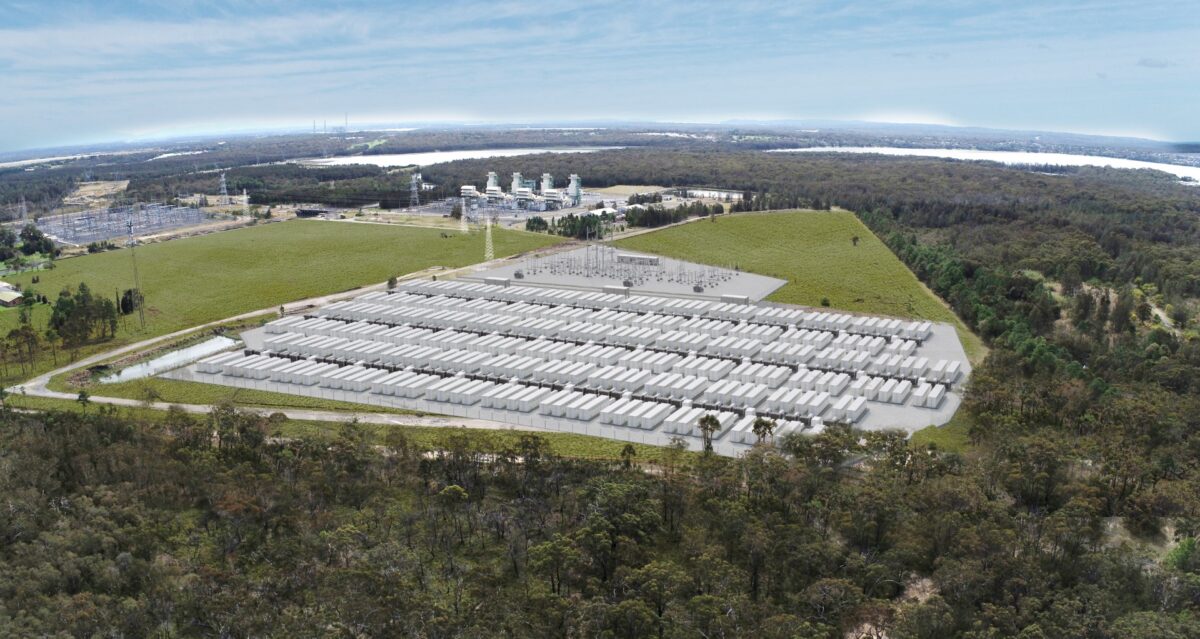United States-based investment giant BlackRock announced it has raised more than $500 million, including a $100 million investment commitment from the Clean Energy Finance Corporation (CEFC), to help finance the Waratah Super Battery that is being developed on the New South Wales (NSW) Central Coast.
The Waratah Super Battery (WSB), being built by BlackRock battery offshoot Akaysha Energy at the site of the decommissioned Munmorah coal-fired power station near Doyalson north of Sydney, is intended to unlock latent transfer capacity in the existing transmission system, help integrate renewable energy, and maintain grid reliability by acting as a ‘shock absorber’ during power surges.
Akaysha has been contracted to deliver a battery capable of providing a guaranteed continuous active power capacity of at least 700 MW and a guaranteed useable energy storage capacity of at least 1,400 MWh. The company plans to trade the additional 150 MW/280 MWh of capacity in the electricity market as well as potentially releasing it during off-peak times.
Charlie Reid, BlackRock’s co-head of climate infrastructure in the Asia Pacific region, said the battery will add greater reliability and resilience to the power grid and will help Australia achieve its renewable ambitions.
“We firmly believe battery storage is the critical technology of today, applied both on a small scale in homes and for large-scale battery platforms like the Waratah Super Battery,” he said.
The WSB, which will be the largest standby network battery in the Southern Hemisphere and one of the biggest in the world, has been identified as a priority project in the Australian Energy Market Operator’s (AEMO) Integrated System Plan, which maps the investment required to achieve the federal government’s targeted 82% renewables by 2030.
Construction of the WSB began in May and is targeted for completion before August 2025, when Origin Energy’s 2,880 MW coal-fired Eraring power station in the Hunter region is scheduled to close.
The closure of the Eraring plant is part of a quickening shutdown of coal-fired generation across the grid with 60% of capacity now projected to be withdrawn by 2030.
AEMO estimates that Australia’s current storage capacity will need to increase from less than 2 GW operational or committed today to 61 GW by 2050 to meet energy demands through a mixture of utility-scale batteries, hydro storage and virtual power plants.
CEFC Chief Executive Officer Ian Learmonth said the federal government-backed green bank’s investment in the WSB supports a secure grid powered by renewable energy and fit for a future, low-emissions economy.
“Long- and short-duration storage assets are critical to building an energy network fit for purpose in the 21st century, enabling Australia to capitalise on its abundant natural resources of wind and solar to decarbonise the grid,” he said.
“Battery storage underpins a future balanced grid, ensuring that more clean energy can reach more consumers and providing network stability as coal continues to exit the network earlier than predicted.”
BlackRock’s funding announcement for the Waratah Super Battery comes after the asset manager acquired Melbourne-based Akaysha last year and is part of its plan to develop other battery storage projects in NSW, Queensland, South Australia and Tasmania.
This content is protected by copyright and may not be reused. If you want to cooperate with us and would like to reuse some of our content, please contact: editors@pv-magazine.com.









By submitting this form you agree to pv magazine using your data for the purposes of publishing your comment.
Your personal data will only be disclosed or otherwise transmitted to third parties for the purposes of spam filtering or if this is necessary for technical maintenance of the website. Any other transfer to third parties will not take place unless this is justified on the basis of applicable data protection regulations or if pv magazine is legally obliged to do so.
You may revoke this consent at any time with effect for the future, in which case your personal data will be deleted immediately. Otherwise, your data will be deleted if pv magazine has processed your request or the purpose of data storage is fulfilled.
Further information on data privacy can be found in our Data Protection Policy.